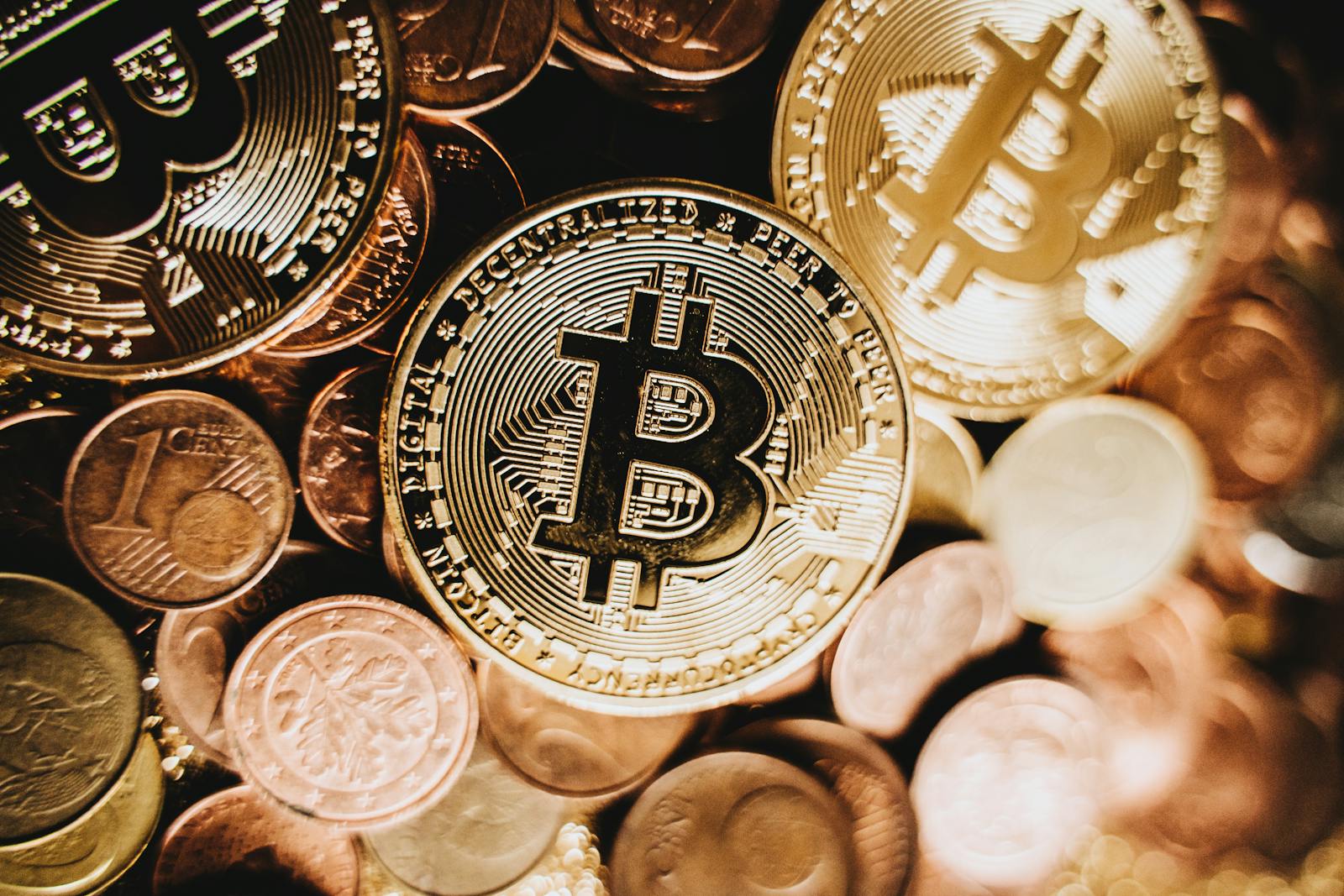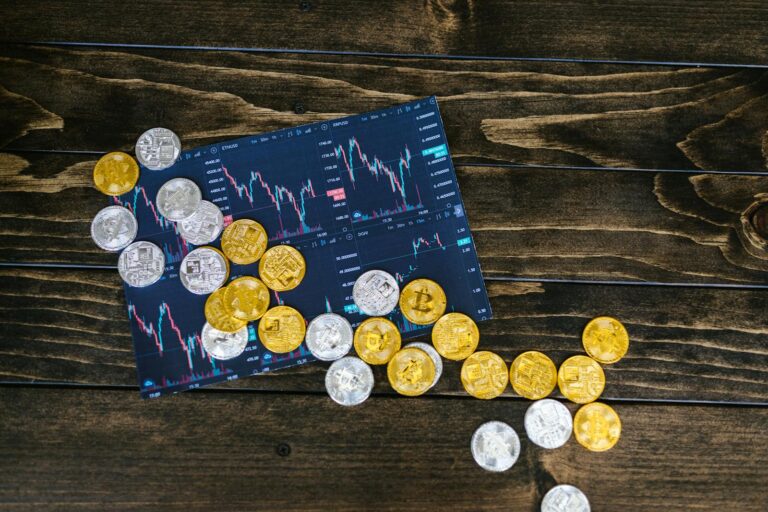Easiest Way to Use Decentralized Exchanges (DEXs) for Effortless Trading
In the rapidly evolving world of cryptocurrency, trading has transcended traditional platforms, leading to the emergence of The Easiest Way to Use Decentralized Exchanges (DEXs). DEXs empower users to trade directly with one another, eliminating intermediaries and fostering a more transparent trading environment. This guide aims to demystify DEXs, illustrating their unique benefits and teaching you how to navigate them seamlessly.
Introduction to Decentralized Exchanges (DEXs)
Decentralized exchanges are platforms that allow users to trade cryptocurrencies directly without relying on a centralized authority or third party. Unlike traditional exchanges, which hold user funds and manage transactions, DEXs utilize smart contracts on blockchain networks to facilitate peer-to-peer trading securely. Understanding how these exchanges operate is crucial for anyone looking to venture into the decentralized finance (DeFi) space.
The rise of DEXs can be traced back to the need for greater privacy, security, and control over one’s assets. As users become increasingly wary of centralized institutions, the importance of decentralized alternatives grows. Moreover, DEXs often provide features that traditional exchanges lack, including token listings and lower fees.
The Evolution of Cryptocurrency Exchanges
Cryptocurrency exchanges have evolved tremendously since Bitcoin’s inception in 2009. Initially, trading was limited to peer-to-peer marketplaces, which were cumbersome and often fraught with security risks. The introduction of centralized exchanges revolutionized the landscape by providing user-friendly interfaces, advanced trading features, and liquidity support. However, the very nature of these exchanges led to concerns about security breaches, user privacy, and manipulation.
The advent of decentralized exchanges shifted this paradigm by prioritizing user autonomy. By eliminating the need for a trusted third party, DEXs offered an innovative solution to existing challenges while leveraging blockchain technology’s advantages.
How DEXs Operate
At the heart of a DEX’s operation are smart contracts—self-executing agreements coded onto the blockchain. When a user wishes to trade, they interact with the DEX interface, selecting the tokens they wish to exchange. The smart contract then automatically facilitates the transaction based on predetermined conditions. This process not only streamlines trading but also enhances security, as users maintain control over their private keys and funds throughout the transaction.
Another critical aspect of DEX functionality is liquidity pools. These pools enable users to contribute their digital assets to a collective fund used for trading. In return, liquidity providers earn fees from trades executed within the pool. This system incentivizes participation and ensures there’s always enough liquidity for traders.
Types of DEXs Available Today
The decentralized exchange market is diverse, comprising various types tailored to different needs. Understanding the distinctions between these types will help you choose the right platform for your trading preferences.
- Automated Market Makers (AMMs): AMMs, like Uniswap and SushiSwap, use algorithms to set asset prices based on supply and demand. They rely on liquidity pools and do not require order books, making them user-friendly and accessible.
- Order Book DEXs: These platforms, such as BitShares and EtherDelta, replicate the traditional exchange model by matching buy and sell orders through a centralized order book. While less popular than AMMs, they offer greater precision and better price discovery.
- Hybrid DEXs: Hybrid exchanges aim to combine the advantages of both centralized and decentralized models. They leverage an order book for trading while utilizing smart contracts for settlement, offering users a seamless trading experience.
Understanding the Key Benefits of Using DEXs
Choosing to trade on a decentralized exchange comes with numerous advantages, particularly when compared to traditional centralized exchanges. Awareness of these benefits can significantly enhance your trading experience.
Enhanced Security and Control
One of the primary reasons traders gravitate toward DEXs is the heightened level of security they offer. Since users retain control over their private keys, their funds remain secure from potential hacks that plague centralized exchanges. Additionally, DEXs limit the risk of fraud, as transactions occur directly between users without the need for intermediary oversight.
Moreover, transparency within the blockchain ensures that all transactions are immutable and publicly accessible. Users can verify trades independently, reducing the likelihood of manipulative practices common in centralized settings.
Greater Privacy and Anonymity
Privacy is a growing concern in today’s digital landscape, and DEXs excel in this area. Most DEXs do not require extensive KYC procedures, allowing users to trade without exposing personal information. This anonymity appeals to many traders who prioritize privacy over convenience.
While some might see this lack of regulation as a drawback, it empowers users to engage freely in trading without governmental oversight or censorship. Decentralization fosters an open marketplace where individuals can exercise their financial freedom.
Lower Fees and Reduced Slippage
Trading fees on DEXs tend to be lower than those on centralized exchanges due to the absence of multiple intermediaries. Many DEXs operate on a fee-sharing model, distributing a portion of transaction fees to liquidity providers, thereby incentivizing contributions while minimizing costs for traders.
Additionally, DEXs often experience less slippage, particularly during high-volume trading periods. Since trades occur directly between users, the price impact is reduced, enabling traders to achieve better execution prices.
Access to a Wider Variety of Tokens
Unlike centralized exchanges, which often impose stringent listing requirements, DEXs typically allow users to trade a broader array of tokens. This accessibility opens up opportunities for trading new or niche cryptocurrencies that may not yet be available on larger platforms.
For those interested in exploring emerging projects or engaging in innovative DeFi protocols, DEXs serve as gateways to a vibrant ecosystem of tokens and assets that promote diversity in investment strategies.
Step-by-Step Guide: Navigating a DEX Interface
While the concept of trading on a decentralized exchange may seem daunting, using a DEX can be straightforward once you understand the key components of its interface. Here’s an easy-to-follow guide to help you navigate a typical DEX platform effectively.
Creating a Digital Wallet
Before accessing a DEX, you’ll first need a digital wallet capable of storing cryptocurrencies. Wallets come in various forms, each offering unique features and levels of security. Popular choices include:
- Hardware wallets: Devices like Ledger Nano S or Trezor provide excellent security by keeping your private keys offline.
- Software wallets: Applications like MetaMask or Trust Wallet provide convenient access to your digital assets while being user-friendly.
- Web wallets: Options such as Coinbase Wallet or MyEtherWallet are accessible through your browser but may be more vulnerable to hacks.
Once you’ve chosen a wallet, follow the instructions to set it up and ensure it’s compatible with the tokens you plan to trade.
Connecting Your Wallet to a DEX
After setting up your wallet, the next step is to connect it to the DEX you wish to use. Most DEX platforms offer a “Connect Wallet” option prominently on their homepage. Click on this button, and select your wallet provider from the list.
Once selected, you may need to authorize the connection via your wallet interface. Ensure that you are cautious about which DEX you choose to connect with and verify its authenticity, as impersonators can lead to compromised assets.
Selecting a Trading Pair
Upon successful connection, you’ll land on the DEX interface, where you can begin trading. The first task is to select a trading pair. Most DEXs offer a search function to help you find the specific tokens you want to exchange. For example, if you wish to trade Ether (ETH) for a lesser-known token like Uniswap’s UNI, input the token names into the search bar.
It’s essential to review the current market rates and liquidity before executing a trade. Markets can fluctuate quickly, so having a clear picture of the trading pair’s performance will aid your decision-making process.
Executing a Trade
Once you’ve selected your desired trading pair, proceed to input the amount of tokens you wish to exchange. The DEX interface will automatically display the equivalent amount you’ll receive upon completion of the transaction.
Before finalizing the trade, review the details, including transaction fees. If everything looks good, confirm the trade, and wait for the transaction to be processed. Transactions on the blockchain can take time depending on network congestion, so patience is key.
Essential Security Measures for DEX Trading
While DEXs inherently offer increased security through decentralization, engaging in crypto trading still carries certain risks. Implementing robust security measures is essential for safeguarding your assets and ensuring a safe trading experience.
Utilizing Hardware Wallets
For added security, consider using a hardware wallet to store your cryptocurrencies. Hardware wallets keep your private keys offline, significantly reducing the risk of hacks and unauthorized access. Whenever possible, store the majority of your crypto holdings in this secure environment, only transferring the necessary funds to your software wallet for active trading.
Using reputable hardware wallets, such as Ledger or Trezor, is crucial. Ensure you purchase these devices from authorized retailers to avoid counterfeit products.
Conducting Thorough Research
Before trading any cryptocurrency on a DEX, conducting thorough research is paramount. Familiarize yourself with the projects behind the tokens you’re considering and assess their credibility. Look out for red flags, such as vague whitepapers, anonymous teams, or unrealistic promises.
Join community discussions, scrutinize social media presence, and engage with research forums to gather insights. By doing your homework, you can make informed decisions and reduce the risk of investing in scams.
Enabling Two-Factor Authentication (2FA)
If the DEX you choose offers additional security features, such as two-factor authentication (2FA), be sure to enable them. 2FA adds an extra layer of protection to your account by requiring a secondary form of verification when signing in or executing transactions.
Should a hacker gain access to your credentials, having 2FA enabled can prevent unauthorized access to your trading account. Even if a cybercriminal obtains your password, they would still need the second factor of authentication to proceed.
Staying Aware of Phishing Attacks
Phishing attacks are a common threat in the cryptocurrency space, targeting unsuspecting users to obtain sensitive information. Always verify URLs when connecting to a DEX, as attackers often create look-alike websites to deceive visitors.
Bookmark the official DEX website and cross-check any links you receive through email or social media. Be cautious of unsolicited messages asking for your wallet details or private keys, as legitimate services will never request such information.
Common Challenges and How to Overcome Them When Using DEXs
Despite the myriad benefits associated with DEXs, users may encounter challenges during their trading journey. Recognizing these obstacles and employing effective solutions will enhance your overall experience.
High Gas Fees During Network Congestion
One prevalent issue faced by DEX users is high gas fees during periods of network congestion. When Ethereum’s network becomes overloaded, transaction fees can soar, impacting profitability and accessibility for traders.
To mitigate this challenge, consider trading during off-peak hours when fees tend to be lower. Utilizing Layer 2 solutions like Optimism or Arbitrum can also help reduce gas costs while maintaining the benefits of decentralized trading.
Liquidity Issues
Some DEXs may struggle with liquidity, especially when trading lesser-known tokens or during periods of market volatility. Low liquidity can result in higher slippage, diminishing the effectiveness of your trades.
To overcome this obstacle, focus on trading pairs with established liquidity pools. Alternatively, engage in liquidity provision by adding your tokens to pools, supporting the DEX while potentially earning trading fees in return.
Limited Customer Support
As decentralized exchanges typically lack the customer support structure found in centralized exchanges, users may face challenges resolving issues or seeking assistance. This can be frustrating, especially for newcomers navigating unfamiliar interfaces.
When using a DEX, be proactive in joining community forums, Discord servers, or Telegram groups where fellow users can provide guidance and support. Engaging with others can help address common questions and improve your understanding of the platform.
Complexity of Token Swaps
For novice traders, the mechanics of swapping tokens on a DEX can be overwhelming. Understanding concepts like slippage tolerance, transaction confirmation times, and impermanent loss is pivotal for successful trading.
Invest time in learning the fundamental concepts and terminology associated with DEX trading before diving in. Many resources, including video tutorials and articles, can assist you in building confidence and expertise.
Future of DEX Trading: Trends and Innovations
The future of decentralized exchanges looks promising, as innovations continue to shape the landscape and improve user experiences. Keeping an eye on upcoming trends will help you stay ahead in the ever-evolving DeFi space.
Integration of Cross-Chain Solutions
As the cryptocurrency ecosystem expands, the need for interoperability among different blockchains grows. Cross-chain DEXs will enable users to trade assets across various blockchain networks seamlessly. This innovation will enhance liquidity and open new avenues for trading diverse tokens.
Projects like Thorchain and Polkadex are pioneering cross-chain solutions, allowing users to swap assets from different ecosystems without relying on centralized custodians. Such breakthroughs could redefine how we perceive and engage with decentralized trading.
Development of Layer 2 Solutions
High transaction fees and scalability issues have plagued the Ethereum network, motivating developers to explore Layer 2 scaling solutions. These enhancements enable faster and cheaper transactions while preserving the advantages of decentralization.
As more Layer 2 solutions gain traction, DEXs built on these networks will flourish, attracting a wider audience seeking efficient trading experiences. Keep an eye on developments in this area, as they have the potential to revolutionize DEX functionalities.
Introduction of Advanced Trading Features
To remain competitive and cater to user demands, DEXs are evolving by introducing advanced trading features reminiscent of centralized exchanges. Limit orders, stop-loss orders, and margin trading capabilities are becoming commonplace on many DEX platforms.
These features will empower traders to implement sophisticated strategies while maintaining control over their assets. As DEXs continue to innovate, users can expect a richer and more versatile trading experience.
Emphasis on User Experience and Interface Design
User experience plays a vital role in attracting new traders to DEXs. As the industry matures, we can anticipate a stronger emphasis on interface design and ease of use. DEXs will strive to simplify navigation, streamline trading processes, and enhance overall usability.
Additionally, educational resources and onboarding materials will likely become more prevalent, assisting newcomers in grasping the intricacies of decentralized trading. A user-friendly environment will foster greater engagement and adoption among diverse audiences.
Conclusion
Navigating the world of decentralized exchanges (DEXs) opens doors to new opportunities in cryptocurrency trading. With enhanced security, privacy, and a wider variety of tokens, DEXs present compelling alternatives to traditional exchanges. By following our comprehensive guide, implementing essential security measures, and staying informed about ongoing trends, you can confidently engage with DEXs, embracing the future of decentralized finance.








